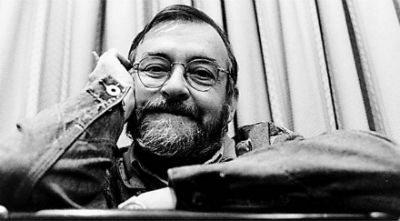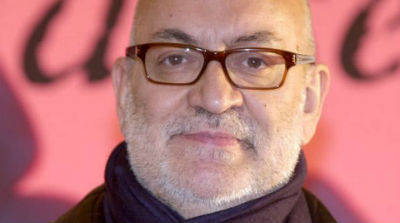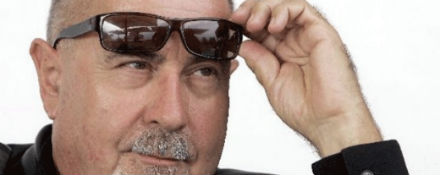
JOSÉ LUIS GARCÍA SÁNCHEZ.
My favorite director is José Luis
García Sánchez. His human quality, integrity, generosity, sense of
humor and solidarity towards others make of him the best person I
know. I first met José Luis in the 1970s, before the death of the
dictator, but we didn't run into each other professionally until I
started working with Trueba and he took me seriously as a producer.
With him I have produced "La noche más larga" (The Longest Night)
-the aforementioned project about the executions by firing squad,
which I had felt tempted to offer to Saura and almost shot with
Chávarri. It is one of my favorite movies and I wouldn't mind
filming it again. We also did "Tirano Banderas", a project in
co-production with Víctor Manuel, and "Tranvía a la Malvarrosa"
(Tramway to Malvarrosa), based on a novel by Manuel Vicent, "La
marcha verde" (The Green March) and six or seven more projects. He
is one of the few directors who, resorting to talent and
efficiency, makes the impossible possible.

GERARDO VERA.
Gerardo Vera, whose professional
relationship with me took shape as an art director in the films by
Saura and Trueba, became a movie director at my side. I recall that
he decided that himself on the day he said to me: "Don't worry,
Andrés; if I decide to be a director some day, you'll be my
producer". I am really happy that Gerardo decided that and with him
we have done: "La otra historia de Rosendo Juárez" (The Other Story
about Rosendo Juárez), from the Borges's series, "Una mujer bajo la
lluvia" (A Woman in the Rain), "La Celestina", "Segunda piel"
(Second Skin) and "Deseo" (Desire). Gerardo is probably one of the
film directors who most needs a producer, despite the fact that his
devotion and obsession for work should suffice for him to make his
own productions. That is because he is a very special, extremely
cultivated and a very sensitive director and artist, which isn't
always compatible with the harsh work involved in production.

BIGAS LUNA.
I first met Bigas Luna in 1989. At
the time I was reading the novels from the "La Sonrisa Vertical"
(The Vertical Smile) collection -"El pecador impecable (The
Impeccable Sinner) was one of them - and I bought the rights for
"Las edades de Lulú" (The Ages of Lulu), written by Almudena
Grandes. Luis García Berlanga, who I have always admired as a
director for "El verdugo" (The Executioner) and "Plácido", was the
president of the jury that awarded a prize to that work and, for
some time, kept declaring in a provoking manner that he would like
to make a pornographic film. I thought that making such a movie
with Berlanga would be impossible, but I saw that the novel offered
the possibility of demystifying some of the myths surrounding the
so-called "Movida madrileña" (The Madrid Night Scene). Berlanga
turned down my proposal for him to direct the film but suggested
that I offer it to Bigas Luna. When I phoned Bigas, he assured me
that for several days he had been thinking about calling me to work
together on a project and that he hadn't done so because he didn't
know me personally. I asked him to read "Las edades de Lulú" and a
few days later he came to Madrid. He told me that in principle the
novel was of no interest to him but that he wanted to work with me
in some other project. That was the beginning of a
joint-collaboration whereby we didn't just film "Las edades de
Lulú", but also: "Jamón, Jamón" (Ham. Ham), "Huevos de oro" (Golden
Balls), "La teta y la luna" (The Tit and the Moon), and "Son de
mar" (Sound of the Sea). In fact, we almost filmed "Perdita
Durango" together too. We have a tacit commitment to continue
working together and preparing other projects for the future. After
filming "La teta y la luna", Bigas thought that for us to work
together again we had to spend some time apart, that he had to work
for other companies and wanted to make films involving other
styles. Although I don't like such experiments (I am very
possessive) I must admit that he was right. I think that Bigas is
the best Catalan film director in the last few decades and that,
although he is reluctant to use narration in his films, he has a
lot of talent and intuition and tells his stories with the camera
as few others can.